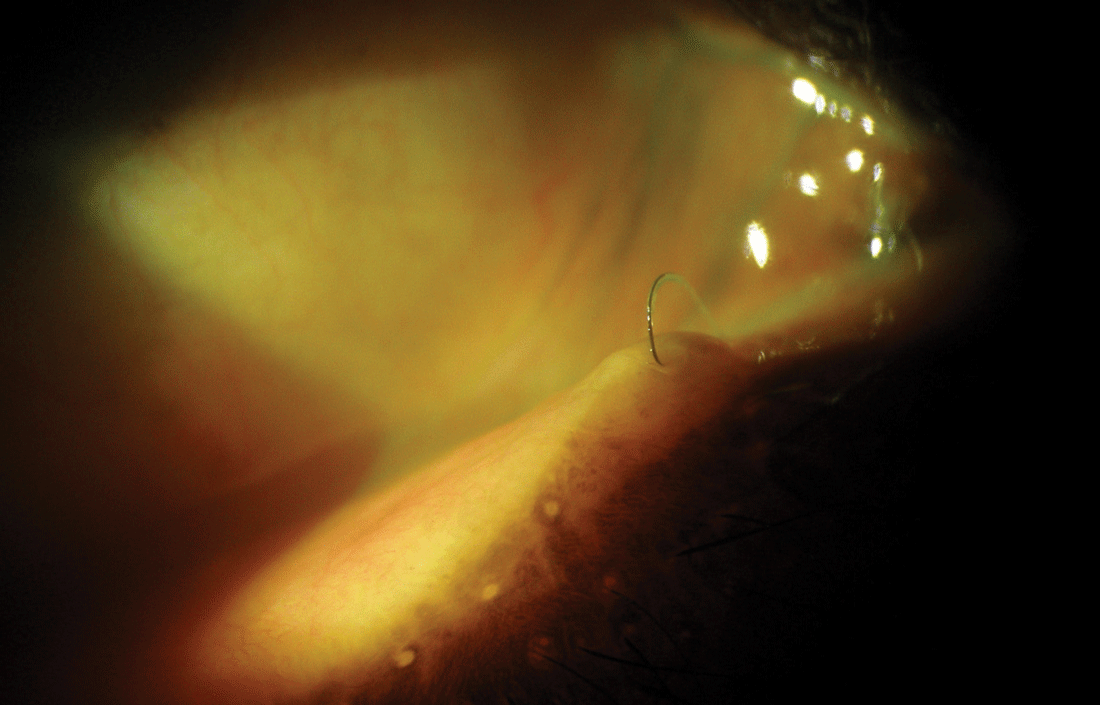
History
A 25-year-old black female presented via the emergency room with acute eye pain. She explained that she had been putting on her makeup in the morning when she felt something fly into her right eye. Unable to get it out, she reported for care. She was in considerable distress, but did not report any altered vision. She reported no previous ocular history or allergies.
Diagnostic Data
Her best uncorrected visual acuities were 20/20 OD and 20/20 OS at distance and near. External examination was normal with no evidence of afferent pupillary defect. The anterior segments of both eyes were normal. The pertinent finding, in the right eye, is demonstrated in the photograph (Figure 1). Applanation intraocular pressures measured 19mm Hg in both eyes. Her dilated fundus examination was normal.
 |
| Fig. 1. Can you tell what’s causing this patient’s ocular pain? How would you manage this patient? Click image to enlarge. |
Your Diagnosis
Does this case require any additional tests? What does this patient’s history and clinical findings tell you about her likely diagnosis?
Answers
Examination
Additional tests/procedures included the immediate taking of visual acuity followed by a detailed history, during which the patient literally asked to pinpoint the area of concern. This was followed by the instillation of topical anesthetic to ease the patient’s discomfort. Next, a sodium fluorescein stain was instilled and biomicroscopic examination was completed in a problem directed approach to uncover the acute issue. The stain would help to rule out corneal abrasion. Even though the offending intruder was visualized, eversion of the upper and lower eyelids is necessary to rule out the presence of any additional foreign bodies. If her symptoms had persisted consideration would have been given for double lid eversion, conjunctival swabbing and complete lavage.
Diagnosis
The diagnosis in this month’s issue is straightforward: An eyelash became dislodged and worked its way into the punctal opening of her right eye.
The lash was found during biomicrosopy (which was moved to the front of the examination sequence) and removed with a forceps, with no complications. The most important thing to remember is to gather pointed information from the patient so the “search zone” can be localized.
In this case, the foreign matter could easily be seen. However, sometimes debris works its way into a conjunctival crevasse or becomes hidden from view by mucus. In those instances, despite blind conjunctival swabbing with a cotton-tipped applicator, the pain will return when the topical numbing agent wears off. That is why it is equally important to have the patient remain in the office for a time after the procedure. They should not be dismissed until it is clear they are pain free and normalized, far past the point of the anesthetic’s limits. If the pain is still present—a sticking pain, like something is in there—there is probably something else in there, warranting an intensive look until the object is found.

